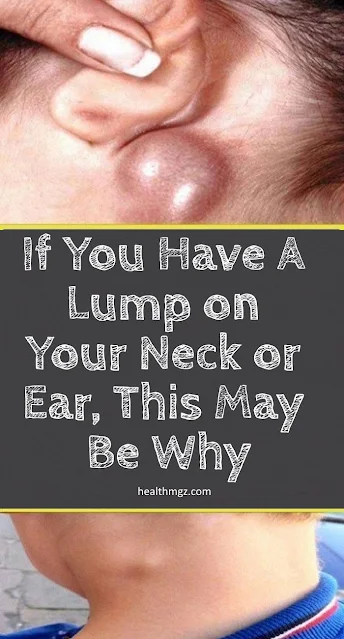The appearance of lumps and bumps on the skin behind the neck, along hairlines, is quite common. They may be caused by skin irritation, muscle knots, acne, boils, and cysts.
We will be taking you through some of the most common reasons people have lumps and bumps on the hairline at the back of their necks. We will also include when to seek medical attention.
1. Swollen lymph nodes
Lymph nodes can swell due to infection
As a part of the immune system, the lymph system features a web of lymph vessels and nodes.
Swollen lymph nodes can be a possible symptom of an infection that the body’s immune system is fighting against. It can be common infections like flu or cold.
Both sides of the spine, which is at the back of the neck are the areas that numerous lymph nodes go up and down. These lymph nodes are also located behind each of the ears.
The problem may be a swollen lymph node if a back neck lump :
•Is tender when touched
•Has a size around that of marble
•Moves a bit when touched
Also, lymph nodes can swell at times if there is an infection beside its location. For instance, if someone has a throat or ear infection, a swollen lymph node may develop on the neck, which is nearby. As the infection begins to disappear, the swelling will also be going down proportionally.
Though uncommon, swollen lymph nodes also can be a symptom of a noninfectious ailment, like cancer or rheumatoid arthritis.
Notably, swollen lymph nodes can also develop without reason.
It
is advisable to seek medical attention when suffering from swollen
lymph nodes in case there is no relief after a couple of weeks or if it
worsens.
2. Acne
Acne is a common skin condition that might cause a lump behind the ear.
In acne, pores in the skin become blocked with sebum. Sebum is an oily substance secreted by units at the base of hair follicles. The sebum mixes with dead skin cells and can form a layer called a comedone.
A pimple might then become infected and inflamed if certain bacteria enter the comedone. Inflamed pimples can grow and, in their most severe form, form lumps called acne cysts.
If acne is causing the lump, it may cause pain when pressed. Other cysts and pimples on the head are likely to accompany pimples or cysts behind the ear, especially on the face.
Cystic acne is an unpleasant condition that can lead to scarring. Doctors can help manage cystic acne with effective treatments, however.
Here are some types of acne lesion:
•Whiteheads And Blackheads
•Pustules
•Papules
•Cysts
•Nodules
Do You Have a Lump on Your Neck,Back,or Behind Your Ear This Is What It Means (Causes of Lumps and Bumps)
3. Moles
A c.a.n.c.e.r-causing mole can be experiencing an irregular border effect.
Fleshy lumps that develop on the skin top and not beneath or inside the muscle are perhaps a mole.
Most people have body moles. Mole appearance is common during childhood though they can develop on people of all ages.
Moles are mostly harmless. However, they can sometimes be c.a.n.c.er.o.u.s. Moles should always be monitored especially new ones as a way of identifying signals of cancer.
The ACBDE rule is another way to check for skin cancer signs:
•Asymmetry: The mole comes with one half appearing different from the other.
•Border: The border or edge of the mole is irregular or uneven.
•Color: An uneven color or unusual shades like blue and red.
•Diameter: The mole is above 6 millimeters wide, meaning it’s about a pencil eraser size.
•Evolving: The mole keeps changing its appearance with time.
If
someone suspects a mole to be cancerous, let them consult a
dermatologist. It’s advisable to schedule annual checkup visits at a
dermatologist to make sure the moles they have are harmless to them.
4. Cysts
A lump that is full of fluid beneath the skin’s surface is referred to as a sebaceous cyst. These types of cysts appear to be slow in growth but can eventually become quite large.
Sebaceous cysts are typically harmless and painless. They can appear and disappear or keep getting more substantial in size.
When squeezed, certain cysts may ooze out or come to ahead. To get rid of a cyst, one can pop it, but that can cause an infection. A simple in-office procedure is all a doctor needs to get rid of a cyst.
In case of a painful, red, or tender cyst, seeing a doctor is the ideal thing to do because that indicates an infection. Cysts that are infected may look more like large pimples.
